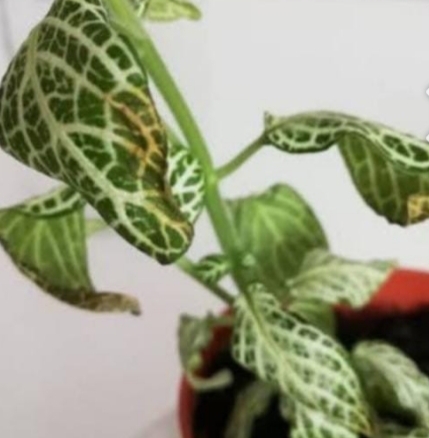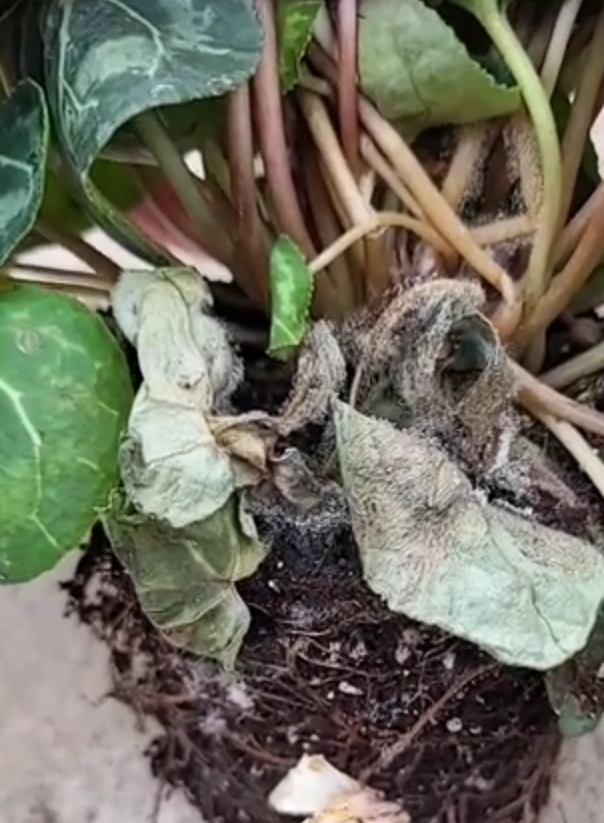Fittonia Plant
Fittonia (Fittonia verschaffeltii), also known as Nerve Plant, is an indoor plant with colorful, veined leaves. Plant in well-draining soil and provide bright, indirect light. Keep the soil consistently moist, and mist the leaves for humidity. Pruning helps maintain a compact and bushy appearance.

Habit
Perennial
Height
0.2-0.3 m
Growth
Slow
Soil
Well Drained, Loamy
Shade
Indirect light to shade
Moisture
Moist
Edible
No
Medicinal
No
Origin
South America
Climatic Condition
Tropical
Temperature (°)
20-30°C
Humidity (%)
60-80%
Potting media
Peat-based mix
Fertilizers
Balanced fertilizer
Watering
Regular watering; prefers moist, shaded locations
Plant Weight
0.3-0.5 kg
Flowering Time
Spring to Summer
Soil Ph level
6.0 - 7.0
Water Ph level
6.0 - 7.0
Soil EC
0.4 - 0.6
Yield Per Plant
Ornamental use
NPK ratio
10:10:10
life Span
Perennial
Health Benefits
Attractive foliage; low-maintenance indoor plant.
Suggested Grow Media or Potting Mix ?
50% peat, 25% perlite, 25% compost
Suggested Fertigation/Fertilizers
Fertilize every 2 weeks with a balanced fertilizer.
Common Diseases and Remedies
Botrytis.
Almost translucent spots , These infected spots turn brown and appears as water soaked lesions.
using resistant cultivars
HEALTH BENEFITS
- Enhances indoor air quality and humidity, benefiting respiratory health.
- Used in folk medicine for anti-inflammatory and wound-healing effects.
What Is A Fittonia Plant?
A Fittonia plant, also known as nerve plant or mosaic plant, is a tropical houseplant prized for its attractive foliage. Fittonias belong to the genus Fittonia within the Acanthaceae family and are native to the rainforests of South America, primarily Peru. These plants are popular for their vibrant and colorful leaves, which feature intricate patterns of veins in contrasting colors such as white, pink, or red against a green or burgundy background.
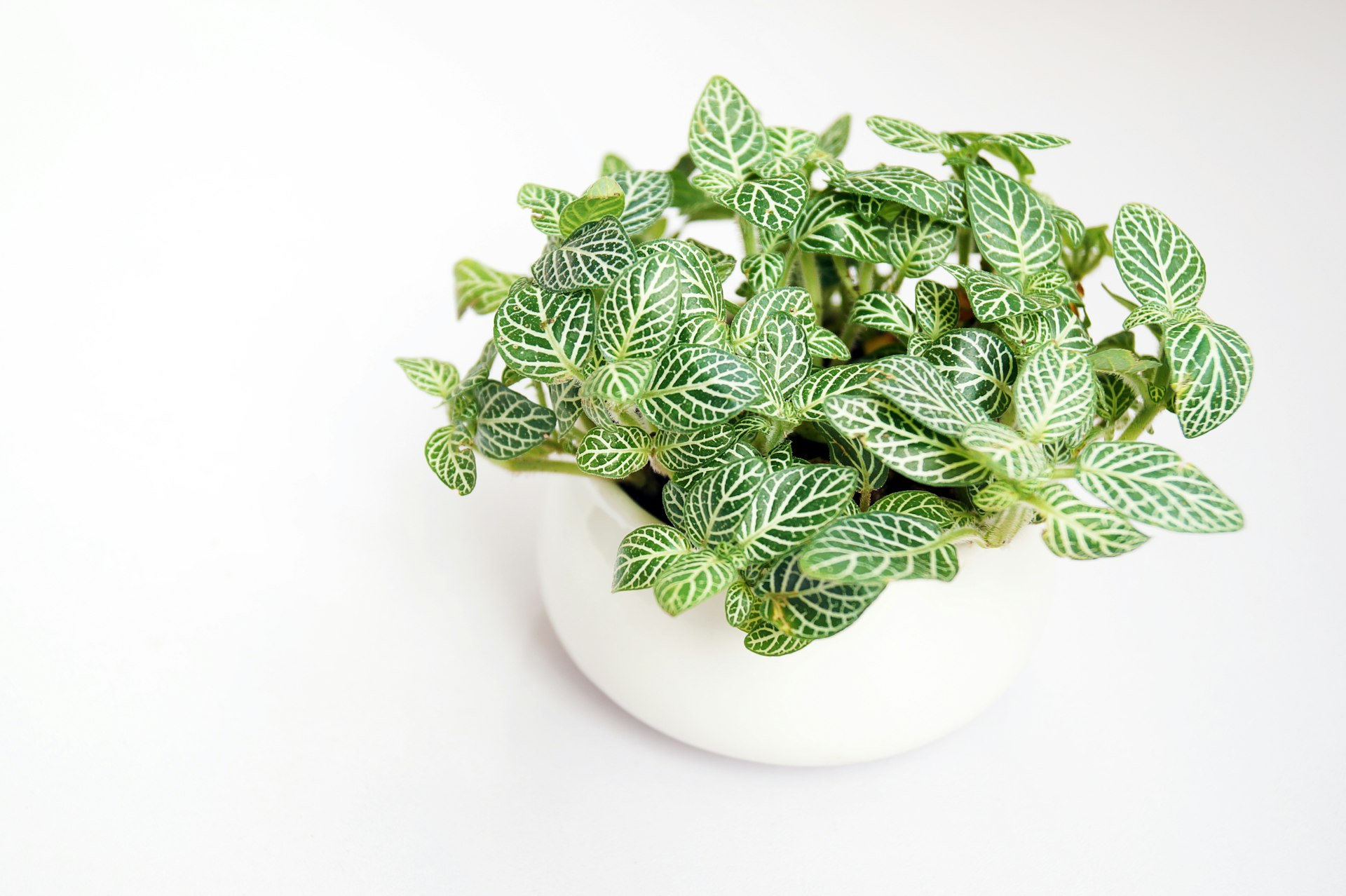
What are the different types of Fittonia plant?
There are several different types of Fittonia plants, each with its unique leaf colors and patterns.
1. Fittonia albivenis:-
This is the most common species of Fittonia, known for its striking green leaves with contrasting white veins. It is often referred to as the "nerve plant" due to the prominent veins on its leaves.
2. Fittonia verschaffeltii:-
This variety features vibrant green leaves with intricate pink or red veins, creating a beautiful mosaic-like pattern. It is sometimes called the "pink-veined Fittonia" or "red-veined Fittonia."
3. Fittonia argyroneura:-
Also known as the "silver nerve plant," this variety has silver-colored veins that contrast with dark green leaves. It adds a subtle touch of shimmer to indoor spaces.
4. Fittonia gigantea:-
This variety is characterized by its larger leaves and more robust growth habit compared to other Fittonia species. It features bold green leaves with prominent veins.
5. Fittonia 'Juanita':-
'Juanita' is a popular cultivar known for its compact growth habit and bright green leaves with striking pink veins. It is prized for its vibrant coloration and ornamental appeal.
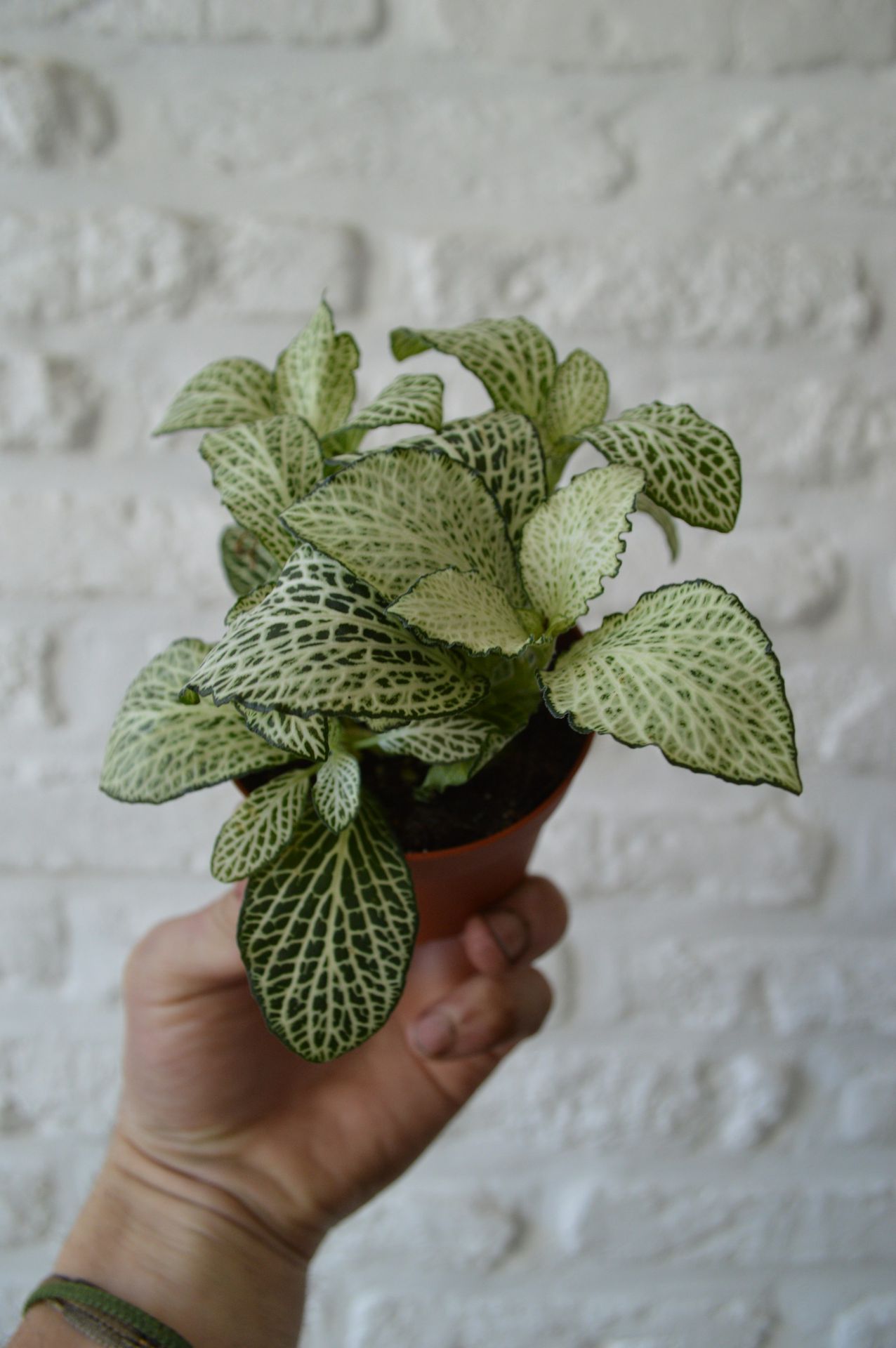
How to care for Fittonia plant?
Caring for Fittonia plants, also known as nerve plants or mosaic plants, involves providing the right growing conditions and proper maintenance.
1.Location:
A suitable location for a Fittonia plant would be near a north or east-facing window where it can receive bright, indirect light. These plants are native to the rainforests of South America and thrive in the dappled sunlight found beneath the canopy of trees. Placing them near a window with indirect sunlight mimics this natural environment, providing the ideal light conditions for healthy growth without the risk of leaf burn from direct sunlight. Additionally, positioning the plant in a location with consistent warmth and high humidity, such as a bathroom or kitchen, can further support its growth and well-being.
2.Sunshine:
Fittonia plants prefer bright, indirect sunlight. While they thrive in light, they are sensitive to direct sunlight, which can scorch their delicate leaves. Placing them near a window where they can receive filtered sunlight or in a location with bright, indirect light ensures they get the light they need for photosynthesis without the risk of sunburn. It's essential to strike a balance to prevent the leaves from fading or becoming leggy while avoiding the harmful effects of direct sunlight.
3.Soil:
Fittonia plants thrive in well-draining soil that retains moisture without becoming waterlogged. A good potting mix for Fittonias is a blend of peat moss, perlite, and/or coarse sand. This mixture provides adequate aeration and drainage, preventing water from pooling around the roots and causing rot. Additionally, the peat moss helps to retain moisture, which is beneficial for Fittonias as they prefer consistently moist soil. Ensuring proper soil composition is essential for the health and growth of Fittonia plants, allowing them to flourish in indoor environments.
4.Hydration:
Fittonia plants require consistent hydration to thrive. Keep the soil consistently moist, but not waterlogged. Water the plant when the top inch of soil feels dry to the touch, typically every 1-2 weeks depending on environmental conditions such as temperature and humidity. Avoid allowing the soil to dry out completely, as Fittonias are sensitive to drought and may wilt if they become too dry. However, be cautious not to overwater, as this can lead to root rot. Maintaining proper hydration ensures the health and vitality of Fittonia plants, promoting lush growth and vibrant foliage.

5.Nourishment:-
Fittonia plants benefit from regular fertilization during the growing season to provide essential nutrients for healthy growth. Use a balanced liquid fertilizer diluted to half strength and apply it every 4-6 weeks. Fertilize sparingly during the winter months or suspend fertilization altogether, as the plant's growth slows down during this time. Avoid over-fertilizing, as it can lead to salt buildup in the soil, causing harm to the plant. Providing proper nourishment through fertilization ensures that Fittonia plants have the nutrients they need to develop vibrant foliage and thrive in indoor environments.
6.Issues:-
1. Wilting
2. Yellowing leaves
3. Leaf browning or crisping
4. Pests
What are the benefits of the Fittonia plant?
Fittonia plants offer several benefits, including:
1. Air purification
2. Aesthetic appeal
3. Stress reduction
4. Humidity regulation
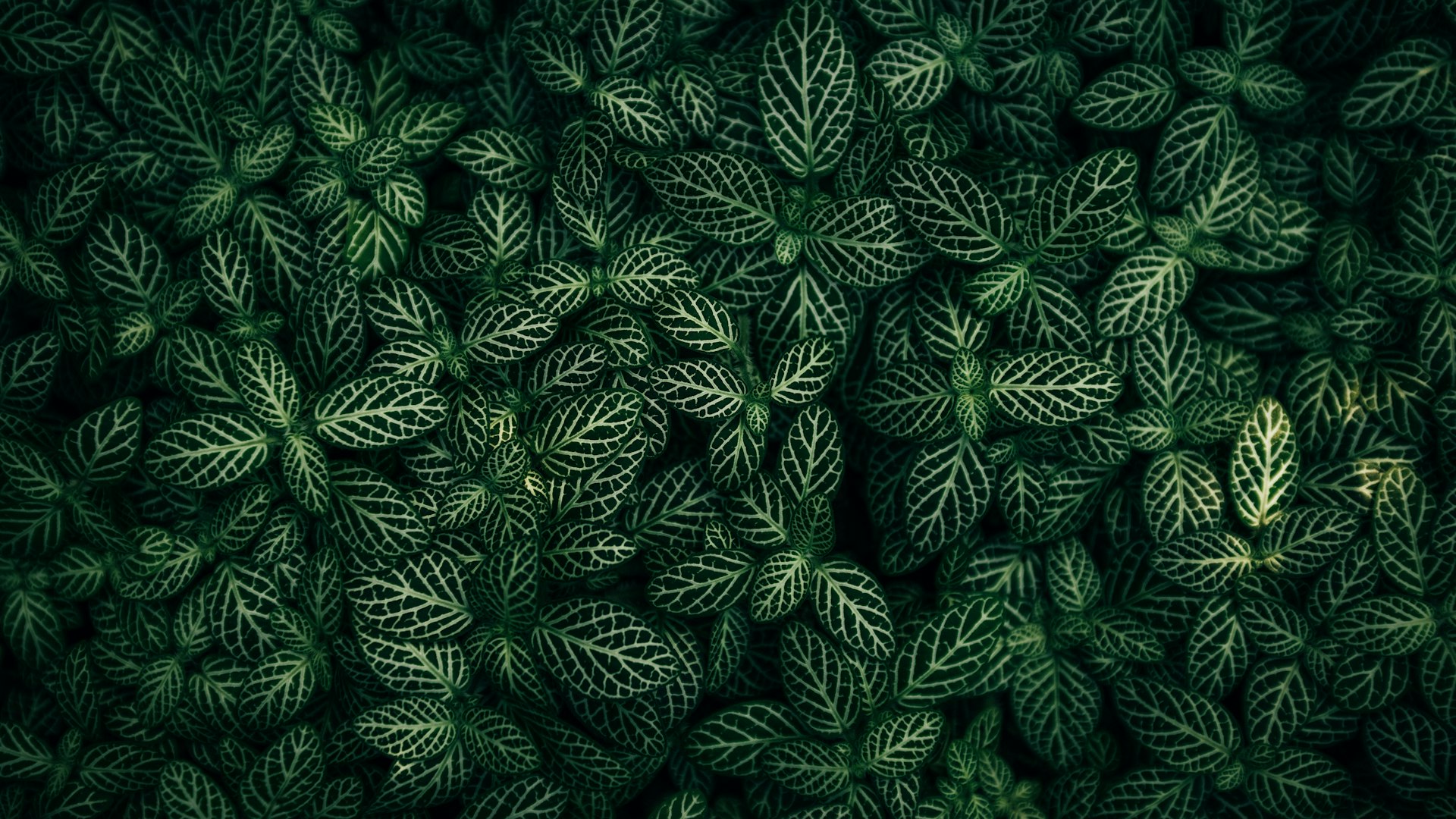
FAQS about growing Fittonia plant
1.How often should Fittonia plants be watered?
Fittonia plants prefer consistently moist soil, so they should be watered whenever the top inch of soil feels dry to the touch. Depending on factors such as temperature, humidity, and the size of the pot, this typically translates to watering every 1-2 weeks. However, it's essential to check the soil moisture regularly and adjust the watering frequency accordingly to prevent both underwatering and overwatering, which can harm the plant.
2.What type of soil is best for Fittonia plants?
The best type of soil for Fittonia plants is a well-draining potting mix that retains moisture without becoming waterlogged. A suitable mixture often consists of equal parts peat moss, perlite, and coarse sand. This blend provides adequate aeration and drainage, preventing water from pooling around the roots and causing root rot. Additionally, the peat moss helps retain moisture, which is crucial for keeping Fittonia plants hydrated. Ensuring the proper soil composition is essential for the health and growth of Fittonia plants, allowing them to thrive in indoor environments.
3.How can I increase humidity for my Fittonia plant?
You can increase humidity for your Fittonia plant through several methods: Regularly misting the foliage with water helps increase humidity around the plant. Aim to mist the leaves lightly, especially during dry periods or in centrally heated homes. Place the pot on a tray filled with pebbles and water. As the water evaporates, it creates moisture around the plant, increasing humidity. Ensure the bottom of the pot doesn't sit in water to prevent overwatering.
4.What are common pests or diseases that affect Fittonia plants, and how can they be treated?
Common pests that affect Fittonia plants include:
1. Spider Mites
2. Mealybugs
3. Aphids
4. Fungus Gnats
5.Can Fittonia plants be grown in terrariums or containers with high humidity?
Yes, Fittonia plants can thrive in terrariums or containers with high humidity. In fact, they are well-suited for such environments due to their preference for moist conditions. The enclosed environment of a terrarium helps to maintain the necessary humidity levels, which is beneficial for Fittonia plants. Just ensure that the terrarium has proper drainage to prevent waterlogging, and provide indirect light to avoid leaf burn. Additionally, misting the plant occasionally can help maintain humidity levels within the terrarium.

